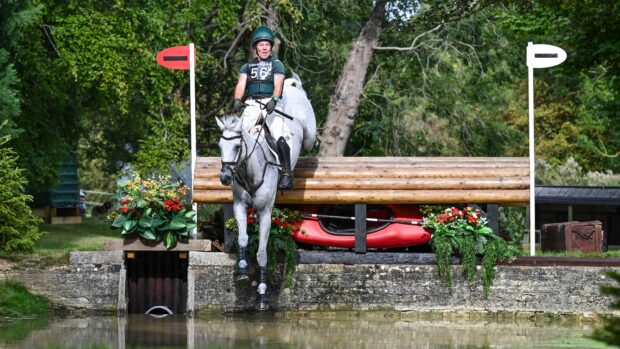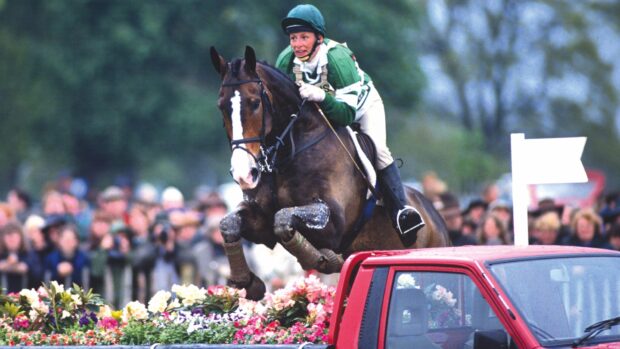Former Burghley winner Mary King walked the track for this year’s Land Rover Burghley Horse Trials (31 August-3 September) for H&H. Find out what she thought of three of the key fences in the videos below and buy this week’s magazine (dated 24 August) for her thoughts on the whole course.
Fence 6abc: Lakeside Corners
Course-designer Mark Phillips says that there are 11 combinations where riders must choose a left-handed or right-handed option, and this is the first.
The left route entails running out of the water and over a single right-hand corner; the right means jumping up a step, over a log and four strides to a left-hand corner.
It’s obviously better to save energy and jump the single corner, but riders must be very definite on their line. The right-hand option is straighter, but they risk tripping up the step.
Fences 9, 10, 11ab: Storm Doris
This is a new fence on a new area of the course along the lakeside, which has been cleared of trees and undergrowth and offers a spectacular view of Burghley House. Three enormous poplar trees blew down in Storm Doris in February, and they have been used here in a zigzag.
The direct line, on the right, means jumping the first single log to a big, acute corner made from the other two logs on two strides. The left-hand route means jumping three elements rather than two, a corner on a curving three strides to a single log and then a third, narrower part.
The logs present a lovely profile to the horses to jump, and being bold and staying right will be the choice of those here to win.
Continued below…
More eventing news:
Burghley drawn order: popular British rider to be the pathfinder
*NEW* Lissa Green’s Burghley blog: my little Trojan horse with the biggest heart and a choppy Irish trot
7 of the best bed and breakfasts near Burghley Horse Trials
Fences 22, 23abcd: Land Rover Trout Hatchery
This is similar to last year. There is a choice of D-shaped brushes at fence 22 — which one riders jump will be determined by whether or not they plan to take the most direct route through the water.
The quick way involves a big log into water over a drop of 1.80m — people who overjumped here were caught out on landing last year — and a skinny brush arrowhead coming out, before a sharp right turn to another brush in the water. If they take the left-hand line over a smaller log, they must jump up out of the water then turn left to another skinny brush further away from the bank.
It will all happen quickly and the best riders will make it look straightforward, but there will be mistakes here. The long route is twisty and time-wasting, taking more out of tiring horses.




